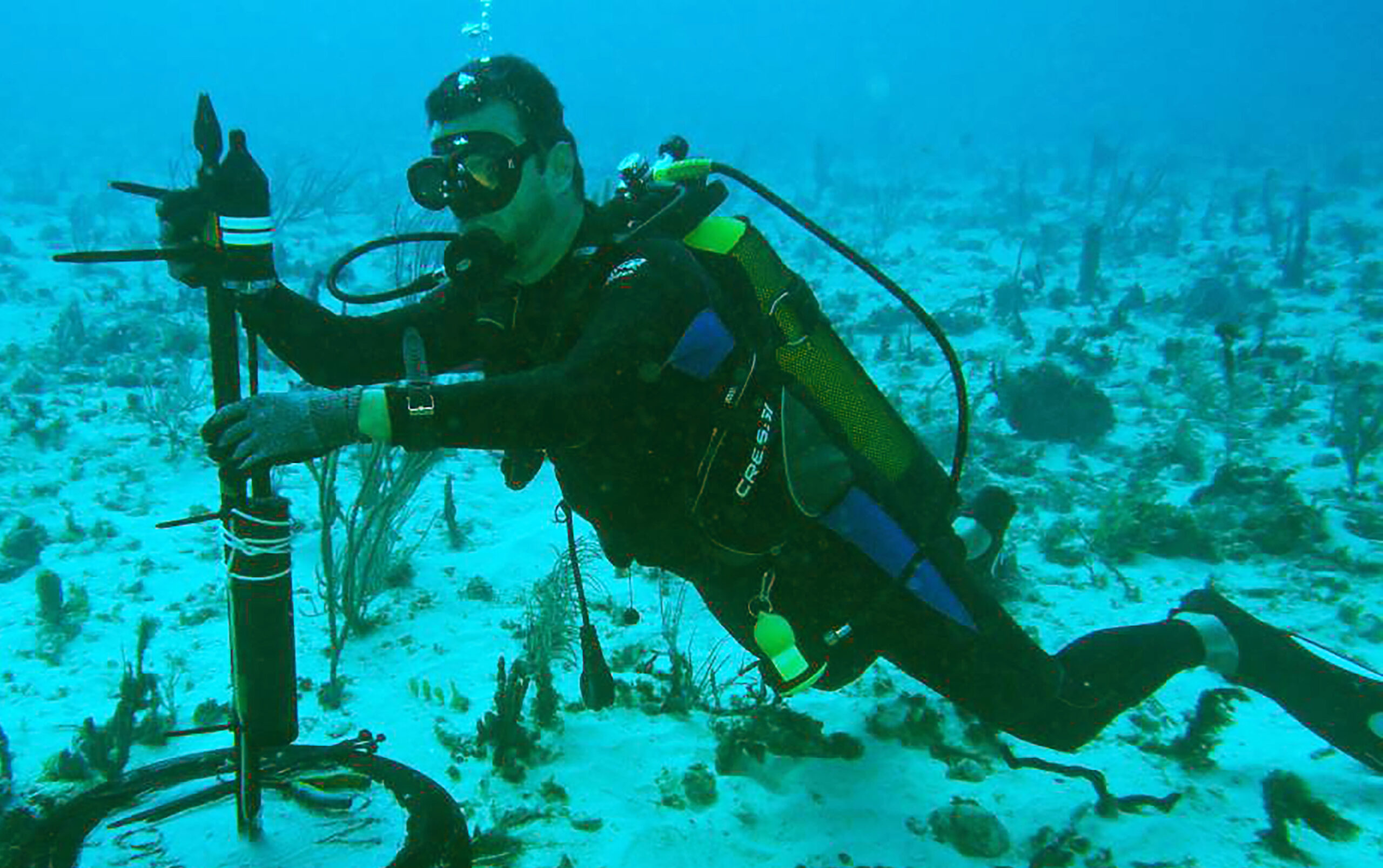Do Loud Noises Affect Fish?

Surveying for underwater gas and oil deposits could harm reef fish.
Recently, seismic testing approvals have reignited the debate about offshore drilling in North Carolina. Nearly every morning you can read an online conversation about the possible pros and cons of offshore drilling. As a fisheries specialist, my focus, quite naturally, is on finding scientific evidence describing the effects on marine wildlife.
Research Need
Marine surveying for underwater gas and oil deposits often uses seismic air guns that emit high-intensity, low-frequency sounds to create an image of the seafloor subsurface. But what are the possible impacts on fish and sensitive fish habitats from air guns? Could the noise cause mild or even lethal injuries? Could it result in behavioral responses, such as changes in swimming patterns or feeding?
With ears similar to those of other vertebrates, most fish use sounds to detect predators, find prey, and communicate with other fish. Loss of hearing can leave fish vulnerable to predators or unable to find mates, among other outcomes.
What did they study?
A 2014 seismic survey offshore from Onslow Bay, North Carolina, provided an opportunity for researchers to monitor whether reef-associated fishes altered behavior in response to air gun blasts.
Scientists placed passive underwater monitoring stations on reefs 82 to 108 feet deep and between 0.43 and 4.91 miles from the path of the seismic survey vessel track. They equipped the two reefs closest to the survey track, a natural rocky reef and an artificial reef, with hydrophones, which documented the acoustic signatures of the surveying.
A video camera recorded fish abundance and behavior on the third and farthest reef from the survey vessel, a naturally occurring rocky reef. Daylight recordings allowed researchers to identify fish, count fish by species, and document behaviors in four categories: feeding, resting, schooling or swimming.
Discrete air gun blasts were audible in video recordings, and researchers could associate behavioral responses accordingly. Two different statistical tests determined if patterns in behavior differed before and during seismic surveying.
What did they find?
Researchers identified 32 species belonging to 17 taxonomic family classifications at the three reefs, including many federally managed species part of the snapper-grouper complex.
Prior to the seismic survey, reef fishes exhibited a daily pattern of increasing in numbers at the reefs during the evening, as compared to morning and afternoon. The total number of fish occupying the reef during evening declined by 78% when exposed to seismic noise. Presumably, some fish stayed away from the reef in response to the noise.
Anything else?
The peak noise levels that occurred at the sites are unknown, because the sounds exceeded the 170-decibel threshold of the instruments. However, laboratory experiments indicate that fish experience injuries when sound intensity surpasses 207 decibels.
Reading
Paxton, A.B., Taylor, J.C., Nowacek, D.P., Dale, J., Cole, E., Voss, C.M, and C.H. Peterson. 2017. “Seismic survey noise disrupted fish use of a temperate reef.” Marine Policy78: 68-73.
Funding for this study was provided by BOEM under Cooperative Agreement M13AC00006, NSF Graduate Research Fellowship DGE-1144081, and the NOAA National Centers for Coastal Ocean Science.
Summary compiled by Sara Mirabilio
Above photo: Soundtrap hydrophone similar to the device researchers used in this study, courtesy of NOAA
The text from Hook, Line & Scienceis available to reprint and republish, but only in its entirety and with this attribution: Hook, Line & Science, courtesy of Scott Baker and Sara Mirabilio, North Carolina Sea Grant. HookLineScience.com
- Categories:



